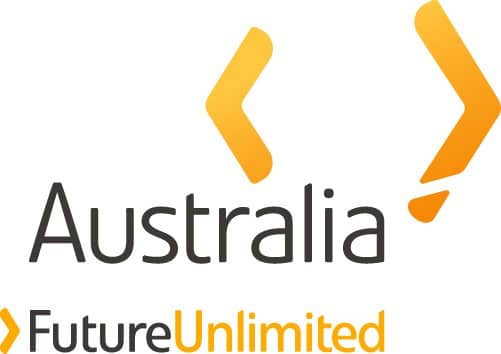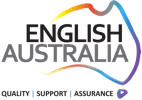When moving to Australia, one of the important things to understand is how the country handles personal health information, especially if you’re familiar with HIPAA (Health Insurance Portability and Accountability Act) in the United States. Protecting your privacy is essential, and knowing the local laws will help you navigate the healthcare system with confidence. This guide explores the Australian equivalent of HIPAA, focusing on the Privacy Act 1988 and the Australian Privacy Principles (APPs).
Understanding HIPAA: A Quick Overview
Before diving into Australia’s privacy framework, it’s important to briefly recap what HIPAA entails. HIPAA is a U.S. law that sets national standards for the protection of patient health information. It applies to healthcare providers, health plans, and healthcare clearinghouses, ensuring that individuals’ medical records and other personal health information are properly protected.
The Australian Equivalent of HIPAA: The Privacy Act 1988
Australia does not have a direct equivalent to HIPAA, but its privacy laws are robust and cover the protection of personal health information similarly. The key piece of legislation is the Privacy Act 1988. This law regulates how personal information is handled by both government agencies and private organizations, including health service providers.
Key Objectives of the Privacy Act 1988
The Privacy Act 1988 aims to:
Protect individuals’ privacy by regulating the handling of personal information.
Ensure that organizations collect and use information responsibly.
Give individuals the right to access and correct their personal information.
The Act applies to all entities with an annual turnover of more than $3 million, as well as some smaller organizations, particularly those dealing with health information.
Australian Privacy Principles (APPs): The Backbone of Privacy Regulation
At the heart of the Privacy Act 1988 are the Australian Privacy Principles (APPs). These are 13 principles that govern the standards, rights, and obligations around the collection, use, disclosure, and storage of personal information.
Overview of the Australian Privacy Principles
Open and Transparent Management of Personal Information: Organizations must manage personal information in an open and transparent way, ensuring individuals are informed about how their data is used.
Anonymity and Pseudonymity: Where possible, individuals must have the option to remain anonymous or use a pseudonym when interacting with organizations.
Collection of Solicited Personal Information: Organizations should only collect information that is necessary for their functions or activities, and they must collect it by lawful and fair means.
Dealing with Unsolicited Personal Information: If an organization receives unsolicited personal information, it must determine whether it could have collected the information under the APPs. If not, it must destroy or de-identify the information.
Notification of the Collection of Personal Information: Individuals must be informed when their personal information is being collected, including the purpose of collection and who it may be disclosed to.
Use or Disclosure of Personal Information: Personal information can only be used or disclosed for the primary purpose for which it was collected unless an exception applies.
Direct Marketing: Organizations can only use personal information for direct marketing purposes under specific conditions and must provide a simple way to opt-out.
Cross-Border Disclosure of Personal Information: Before disclosing personal information to an overseas entity, organizations must take steps to ensure that the information will be handled in accordance with the APPs.
Adoption, Use, or Disclosure of Government Identifiers: Restrictions are placed on the use of government identifiers (such as Medicare numbers) to protect individuals’ privacy.
Quality of Personal Information: Organizations must take reasonable steps to ensure the personal information they collect is accurate, complete, and up-to-date.
Security of Personal Information: Personal information must be protected against misuse, loss, unauthorized access, modification, or disclosure.
Access to Personal Information: Individuals have the right to access their personal information and request corrections if necessary.
Correction of Personal Information: Organizations must take steps to correct personal information to ensure it is accurate, up-to-date, complete, and relevant.
How the Privacy Act 1988 Protects Health Information
Under the Privacy Act, health information is classified as sensitive information, which means it is subject to stricter protections than other types of personal information. Health service providers in Australia, including doctors, hospitals, and pharmacies, must comply with the APPs when handling health information.
Handling of Health Records
Health service providers must ensure that health records are:
- Collected with the patient’s consent.
- Used only for the primary purpose for which they were collected, unless consent is given for other uses.
- Stored securely to prevent unauthorized access or breaches.
- Accessible to patients, who have the right to request copies or corrections.
The Notifiable Data Breaches (NDB) Scheme
An important aspect of Australia’s privacy landscape is the Notifiable Data Breaches (NDB) scheme. This scheme, which is part of the Privacy Act 1988, mandates that organizations must notify individuals and the Office of the Australian Information Commissioner (OAIC) if a data breach occurs that is likely to result in serious harm to the affected individuals. This is somewhat analogous to HIPAA’s Breach Notification Rule.
When Must a Breach Be Reported?
A breach must be reported if:
Personal information has been accessed or disclosed without authorization.
The breach is likely to cause serious harm to individuals, such as identity theft or financial loss.
The organization has not been able to prevent the risk of serious harm.
Differences Between HIPAA and the Privacy Act 1988
While HIPAA and the Privacy Act 1988 share similar goals of protecting personal health information, there are notable differences:
Scope: HIPAA is specific to the healthcare sector, while the Privacy Act 1988 applies broadly across various sectors, including healthcare.
Enforcement: HIPAA violations are enforced by the U.S. Department of Health and Human Services (HHS), while the OAIC is responsible for enforcing the Privacy Act in Australia.
Data Breach Notifications: Both HIPAA and the Privacy Act have breach notification requirements, but the criteria and processes differ slightly.
Conclusion
While Australia does not have a law identical to HIPAA, the Privacy Act 1988 and the Australian Privacy Principles provide comprehensive protection for personal health information. Understanding these laws is crucial for anyone new to Australia, especially those familiar with HIPAA, as it ensures you can confidently manage your personal information and privacy in your new home.





